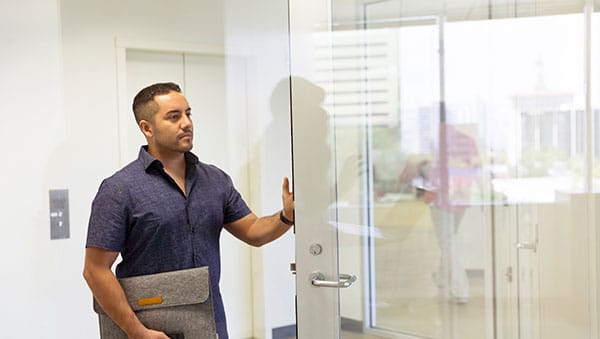Let’s ask a simple question, one that many people believe they know the answer to. Yet, they might have a difficult time actually putting their knowledge into words. What is glass made of?
In elementary school, many of those same people were told that glass is made from sand, which is true. Traditionally, glass was made from melting sand, turning it into a liquid. Sand is mainly silicon dioxide that must be melted at temperatures of about 1700 degrees, Centigrade.
As it cools, the material still doesn’t become truly solid. It’s sort of a cross between liquid and solid. This allows it to be shaped and eventually used in windows and other products because it can be completely transparent when processed correctly.
Manufacturers use a variety of specific methods to produce various glass types, adding chemicals to reduce the melting point, to change colours and so on. Glass, in general, has become very popular for an array of uses because it’s easy to shape, resists heat and doesn’t react to most things it comes into contact with.

Glass Types in Australia
Float (Annealed)
If you haven’t heard the term “float glass” you’re certainly not alone. The “float” process is the foundation of producing much of the flat, clear glass you’re familiar with, which tends to break into jagged pieces on impact. It’s also referred to as annealed, a process of slow cooling.
Think of this type as the starting point for other, more complex glass types that are changed in terms of toughness, colour or even laminated or coated. When two or more glass panels are used, with a specific gas or air space, you have double-glazed glass. This is used primarily for its insulating properties.

Laminated
The lamination technique combines multiple layers of glass with polymers, compounds made by adding or condensing molecules. The result is a tough, hard-to-break product. You might encounter poly-vinyl butyral glass (PVB), made by using pressure and heat. Some laminated-glass products use ethyl-vinyl acetate (EVA) or polyurethane.
When special characteristics are required, manufacturers may use the cast-in-place method, pouring a resin between two glass sheets. The glass panels in all of these products are held together by the layer between panels, providing security and safety benefits not possible with individual glass panels. It’s possible to achieve colour, sound insulation and fire resistance with lamination techniques.

Coated
Coated glass is very different from panels that have been laminated or coloured. The effect is still a change in appearance, and the finished product has a small amount of added strength. The key benefits with coated glass are reduced maintenance, resistance to scratching and specific reflection and absorption characteristics.
Manufacturers apply vapours to the surface of the glass in a controlled manner. The coating binds to the glass when it’s still warm. Vapour coating applied when the glass panel is not in the assembly line process is considered “off line,” as opposed to the first method, called hard-coating. These techniques can be combined with laminating and other processes when necessary.
Security and Toughened Glass
It’s possible to order and install glass types made to withstand ballistic attack, bomb blast and physical attack. Just tell your glass expert you need a special laminate with multiple layers made to a certain level of resistance. This is not necessarily the same as toughened glass, as you can imagine.
Toughened glass is made to be more resistant to breakage, which puts it a new level slightly above float/annealed glass in terms of durability. The heating-and-cooling process is different, resulting in compression that strengthens the panel.

Mirrored, Screen-Printed, Patterned
When a metal coating is attached to one side of a sheet of glass, the result is a mirror. This coating is usually silver or aluminium, though chrome and gold may also be used. Sometimes, mirrored glass has a vinyl backing for safety purposes. Some companies produce screen-printed glass using ceramic paint.
The flat surface of a glass panel can be given a pattern by passing it through rollers with the desired pattern on their surfaces. This is a popular choice for interior design and architecture, with use depending on the need for function and fashion.
You might also ask your specialist about self-cleaning glass, which is specially coating for that purpose. Glass types have changed and improved dramatically through the centuries.

Use the search bar below to find glass installation, repair and replacement specialists in your area





